American Tower Forms Alliance With PMG to Accelerate National SFN Deployment

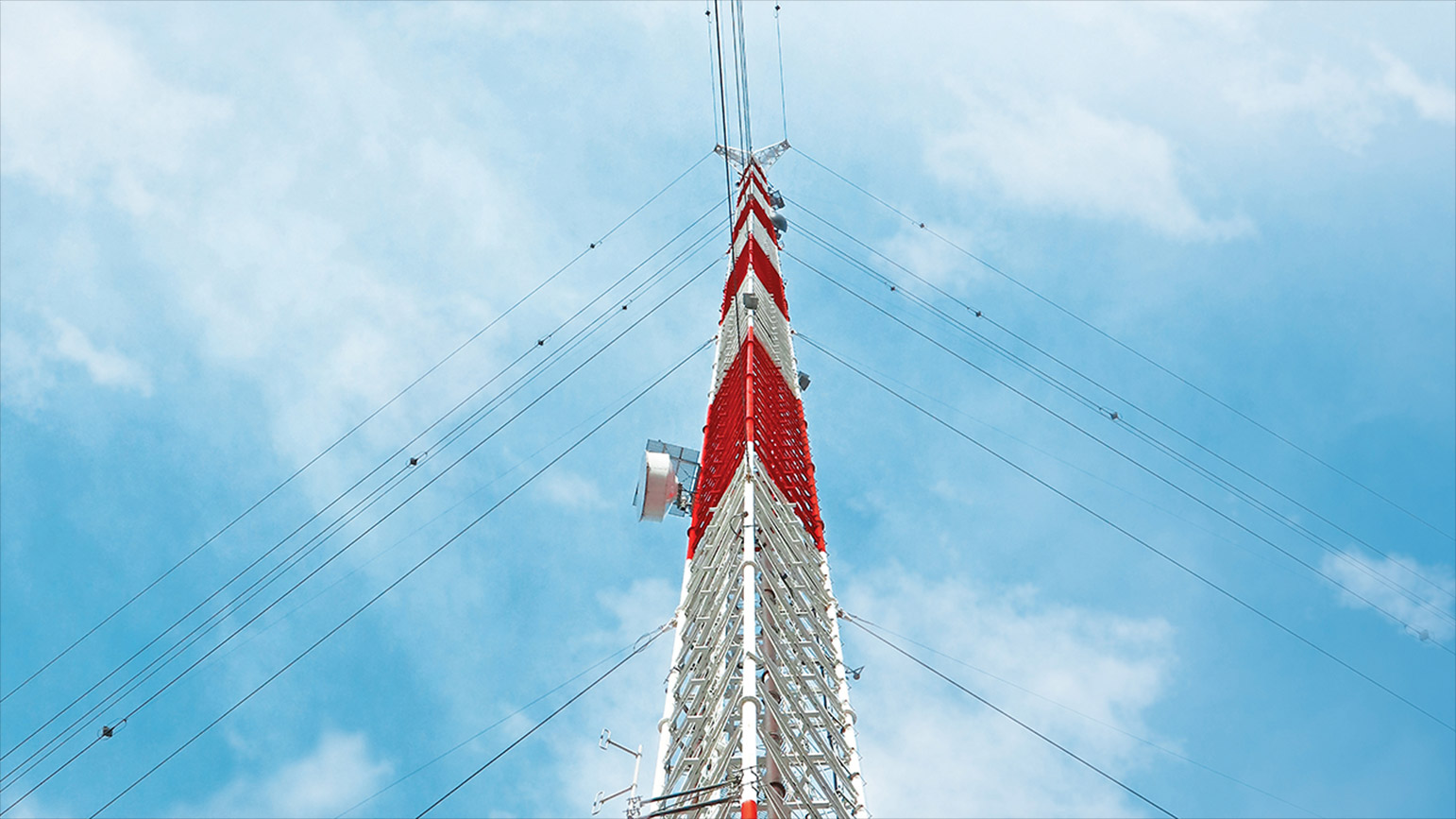
American Tower has formed an alliance with technology infrastructure company Public Media Group (PMG) to enhance and expedite the delivery of Single Frequency Networks (SFNs) to the broadcast industry. The unique collaboration between the two companies is the first comprehensive, turnkey SFN service for commercial and noncommercial TV stations. Both companies will jointly build out the networks, while PMG will own, operate, and manage the SFN infrastructure. This will enable broadcasters to maximize ATSC 3.0 NEXTGEN TV revenue and deliver quality content and enhanced data services to consumers.
The shared infrastructure SFN deployment model also offers broadcasters economic benefits, including increased signal density and coverage improvements for their networks. Installation is much more cost effective with shared infrastructure and it can reduce ongoing operations and maintenance costs.
Mike Kritzman Named New Vice President of Broadcast
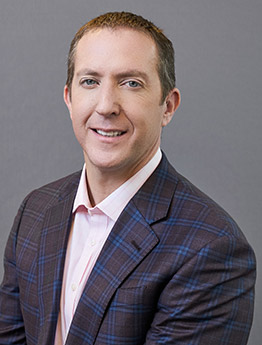
Mike Kritzman is committed to making the American Tower vision for NEXTGEN TV his first landmark accomplishment, since recently being appointed Vice President of Broadcast. After working the past few years with his mentor and predecessor, Pete Starke, in preparing for the leadership role and shifting from wireless to broadcast, Mike’s unique background brings a welcome opportunity to bridge parallels between 5G and NEXTGEN TV in advancing the industry. Read further to learn more about Mike’s plans for the future.
Congratulations on your new leadership role, Mike. Can you tell us a little about your background?
Kritzman: Thank you, it’s quite the honor to continue building on the success of such a reputable team and the legacy left by Pete Starke. I have known and worked with Pete since beginning my career at American Tower in 2001. I started in business development on the wireless side and was fortunate to have the opportunity to create the re-contracting team, which eventually expanded to include asset integrity and managed sites. Then, I rotated over to leasing operations for about three years, before moving back to sales as a member of the strategic national accounts team. The most important lesson I’ve learned in every new role is the emphasis needed on listening and learning, versus taking immediate action. I am approaching this new role in the same manner, with the intention of learning from my team and customers to ensure we’re making the best decisions.
Making the transition from wireless to broadcast must have been quite a shift. What were some of the first things you noticed when moving to broadcast?
Kritzman: The wireless world and the broadcast world are very different, especially when it comes to tower collocations. A lot more goes into the broadcast collocation process in terms of structure, as well as the services we provide our customers. Broadcasters often look to us to provide building space for their equipment, which involves ensuring there is enough power, HVAC, and in many cases backup power. Also, each broadcast buildout is uniquely designed for specific coverage patterns based on FCC licenses. On the wireless side, mobile network operators typically bring their own shelter or use outdoor equipment, and their configurations are somewhat consistent across sites.
Have you been able to apply your wireless experience to your work in broadcast?
Kritzman: Yes, very much so. I’m in a unique position where I have the wireless perspective that can be applied to broadcast, especially as TV transitions to NEXTGEN TV. While broadcasters have done collocations in the past, they haven’t done the volume that will be needed once they commence building out Single Frequency Networks (SFNs). The complexities of SFN buildouts will require multiple collocations in markets and sharing of channels to build the pipe. Our recent alliance with PMG, coupled with our extensive portfolio, prepares us to handle the acceleration of SFN deployments.
What is your outlook on what lies ahead for broadcast?
Kritzman: The COVID environment obviously brings a unique set of challenges for our customers, especially in radio, so it is my goal to make sure we leverage our resources to help our customers address their near- and long-term needs. It is also a critical time for broadcast. NEXTGEN TV is going to be the future of television, and we are in the perfect position to leverage our relationships and operational expertise to expand on opportunities for everyone. The great thing about broadcast is there is tremendous collaboration amongst the community. Broadcasters often work together to solve challenges, and it’s my intention to ensure American Tower continues to be a valued partner. I look forward to being active in the collective effort and seeing how we progress the future of communications.
Reflecting on the Success of Repack and Multi-Channel Antenna Systems
The spectrum repack, involving television stations on American Tower sites that were reassigned to new channels, has successfully concluded, with the last of the projects completed in July. Much of the American Tower repack work involved deploying robust and efficient multi-channel antenna systems that enable antenna sharing. The broadcast team constructed 14 multi-channel antenna systems, providing service for 37 full-power and Class A broadcast stations.
| Location | Antenna System Design |
|---|---|
| Atlanta |
|
| Boston |
|
| Chicago |
|
| Dallas |
|
| Detroit |
|
| Houston |
|
| Norfolk (VA) |
|
| Oklahoma City |
|
| Orlando |
|
Prioritize Safety First
In addition to planning ahead, the team developed strict safety protocols to ensure work was performed in accordance with all necessary guidelines. “We pride ourselves on maintaining an impeccable safety record,” says Stenberg, Principal Broadcast RF Engineer at American Tower, who oversaw system design and deployment of the repack projects. A record of 92 helicopter flights were completed during repack for antenna removals and installations. Besides safety, helicopter picks also allowed for efficiency and minimizing disruption to networks.
Take Advantage of Multi-Channel Antenna Systems
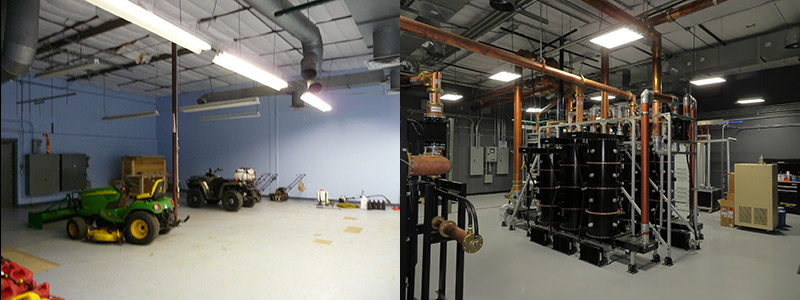
Combiner room before and after repack.
Repack was the first time American Tower used Variable/Adjustable Polarization Technology (VPT/APT) to deploy multi-channel antenna systems. The ATSC 3.0-ready, multi-channel antenna systems provide several benefits to broadcasters looking to future proof system designs. Some of the efficiencies of such modern antenna systems include increased flexibility in polarization, broader coverage, and the ability to share sites and antennas to gain economies of scale and lower costs.
The ability for multiple stations to share sites and antennas is possible in part due to VPT/APT. With VPT/APT, each station using the antenna can customize their polarization ratio for its specific operational requirements. The technology gives broadcasters a future-proof approach, because the polarization ratio can be easily adjusted in the combiner as each station’s requirements change.
“VPT/APT is an important technology, and the multi-channel antenna systems we’re providing are among the very few to offer the capability,” says Stenberg. “It’s been a major advantage for broadcasters. We work very closely with our customers and antenna providers to develop coverage patterns and antenna specifications that meet their requirements.”
Timing is Everything for Daystar’s Arnold Torres
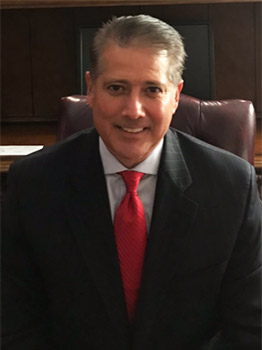
Daystar Television Network® is recognized as the largest domestic faith-based broadcast network, with over 100 full-power and low-power TV stations, as well as carriage on multiple platforms around the world. Daystar runs a very efficient operation for an organization of its size, with about 300 dedicated employees. Arnold Torres, Executive Business Administrator, shares insight into the network’s strategy of aligning with reliable partners to expand audience reach.
I joined Daystar in 2001 in an executive role overseeing accounting, finance, legal, administrative, and human resources. Our network now reaches over 200 countries and 1.7 billion people worldwide. I attribute our success to good timing and being smart about where we spend our resources and who we partner with to enable long-term growth.
Choosing Partners Who Understand Our Business
Recently, we successfully completed all phases of the TV spectrum repack and are now focused on managing the displacement of 56 Low-Power TV (LPTV) stations, which have significant reach in major markets. Unlike repack, where we had more control, LPTV requires us to work more closely with our vendors to minimize downtime. But one of the secrets to our success with repack and LPTV displacement comes from consistently communicating with reliable partners, such as American Tower, who are prepared to handle the complexity of our business.
American Tower is at the forefront of being part of the solution for most of broadcast’s major technological shifts. They have a well-developed strategy to plan for industry changes and their preparation was evident with the repack work. Our mission is to reach as many people as we can with our content, which will require staying abreast with the rapid changes in broadcast technology and maintaining close working relationships with partners like American Tower.
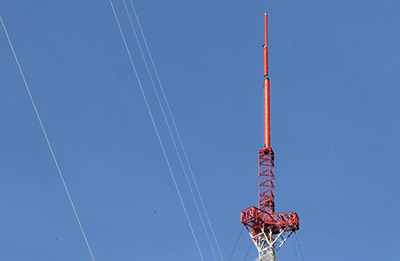
Future Proofing Our Business Model
Our journey with repack has taught us the importance of adapting to new technology and staying innovative to be competitive. There is a lot of potential with NEXTGEN TV and fortunately, we have installed ATSC 3.0-ready equipment. We believe success comes from being good stewards of our resources, so we will continue to future proof our facilities and equipment to prepare for what’s to come. As our CEO, Marcus Lamb always says, timing is everything. We can have the best strategy for where we want our business to go in the future, but we also need to develop a plan around flexibility and timing.
We’re getting ready to introduce our first Spanish subchannel, Daystar Espanol, later this year, and we feel confident about this launch even during unprecedented times. When past opportunities were brought to us, we waited until the timing felt right, because we knew the impact and return would be greater. Patience has served Daystar well in our growth and it continues to serve me well in my long career in broadcast.
Daystar Television Network® is a trademark citation of Word of God Fellowship, Inc. DBA Daystar Television Network.
Disaster Preparedness at the Forefront of Broadcast Design
By Jim Leifer, Senior Manager of Broadcast Operations
Approaching the winter season, the test of a reliable broadcast facility design lies in its ability to weather through disasters and emergency conditions. Service disruptions caused by power outages are one of a broadcasters’ greatest fears, as they can be costly in both time and money. The broadcast operations team at American Tower evaluates all potential threats when designing a nationwide modern facility. Here are some important operational standards for broadcasters to consider when it comes to disaster preparedness.
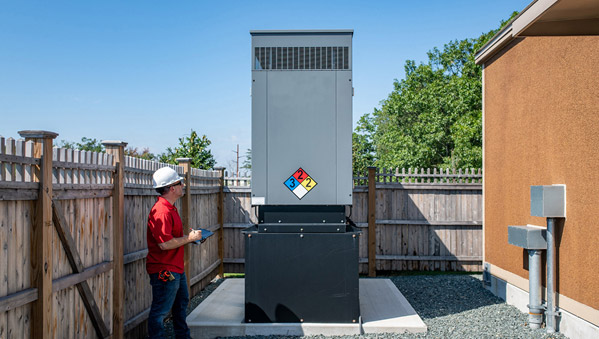
Backup Power
Understanding how to keep broadcast service operating should there be a disruption with the power grid is a major priority. The only way to build power assurance is with a disaster-capable backup power plan. Broadcasters can either build their own power infrastructure or buy assurance via an independent, managed backup power provider, such as American Tower, where full turnkey service and support can be offered. In addition to investing in a backup power generator, a quarterly maintenance plan, including fueling and inspecting controls and systems, must be performed. Quarterly maintenance is a great opportunity to test the generator and ensure your emergency power will perform when you need it to.
Alternate Access
Plan and develop alternate routes for accessing the broadcast site in the event of a disaster where roads to the main entrance are blocked or closed. For these challenging circumstances, many broadcasters have a backup facility at a nearby site. This alternate route offers diversity. Many broadcasters who went through spectrum repack utilized auxiliary sites, allowing work to be done on the towers without affecting their over-the-air signal. Such was the case with American Tower sites in Needham, MA, where major broadcasters were able to stay on air using a backup site, while updating their main site for repack.
Site Monitoring
In preparation of an emergency, having resources outside of the affected area is key to restoring normal operations quickly. One of the advantages for American Tower customers is the ability to rely on a Network Operations Center (NOC), which monitors sites 24/7 and can dispatch repair crews and materials to a site to restore services. More importantly, the NOC performs preventative maintenance, freeing broadcasters to focus on other business priorities.
With any disaster, developing a protocol will minimize a broadcaster’s recovery time. It’s important to know how site equipment will be kept operational and ready, no matter the circumstances. Audiences expect the broadcast network to be connected 24/7, and providers like American Tower can safeguard broadcasters’ commitment with reliable facilities.
NAB TV Engineering Achievement Award Presented to Jim Stenberg
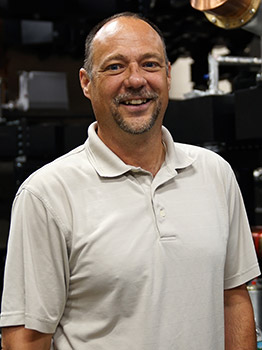
At the virtual National Association of Broadcasters (NAB) Show in April 2020, Jim Stenberg, Principal Broadcast RF Engineer at American Tower, was presented with the prestigious NAB Engineering Achievement Award for his lifelong work in broadcast engineering. Since 1959, the NAB Engineering Achievement Award has recognized individuals for their outstanding accomplishments in the broadcast industry.
Jim Stenberg serves as the company’s subject matter expert on broadcast antennas systems in the U.S. and recently managed the TV repack projects, which ended in July. He holds nine patents and is responsible for numerous RF system product designs. Stenberg has also cowritten a handbook on digital television implementation and presented technical papers at numerous NAB, Society of Broadcast Engineers® (SBE), and IEEE® Broadcast Symposium conferences. Prior to joining American Tower in 2013, Stenberg ran his own consulting and field service business for eight years and worked for several antenna and RF system manufacturers during his 33-year career in broadcast. Congratulations to Jim Stenberg for this great recognition!
SBE® is a registered trademark of Society of Broadcast Engineers, Inc.
IEEE® is a registered trademarked of The Institute of Electrical and Electronics Engineers, Inc.
Contact Our Broadcast Team
With a leading portfolio of communications sites and a dedicated team of Broadcast experts, we deliver LPTV, radio, and NEXTGEN TV solutions to keep our clients connected with their audiences. We’re ready to help you.
CONTACT US
Get the Support You Deserve
When you choose to work with American Tower, we want to ensure you feel continually supported. Our teams take customer service seriously, and we are committed to providing a positive experience to every customer, every time.
See how on the customer support pageCall 877-ATC-SITE (877-282-7483) | Legal | Privacy | Cookie Settings | Media Relations | Vendors | Site Map | Regulatory Status
© 2004 - 2023 by ATC TRS V LLC. All rights reserved.

